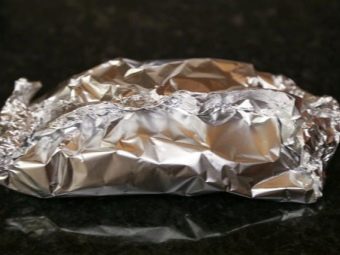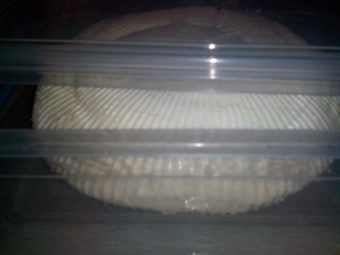How to store Cheese?

Brynza is one of the most popular cheeses in our country, since the mechanism for preparing such a product at home allows it to be produced even independently, if there is constant access to fresh milk. Ready cheese is good both for own consumption, and for treating friends and acquaintances, and even for sale.
The only drawback is that it is impossible to keep Cheese for a long time in the refrigerator: at least cheese will not be able to keep fresh, and in the worst case - the product will become completely unfit for food.At the same time, knowledgeable people can keep this dairy product for a very long time, and we will also try to figure out how to do it.
Method of long-term storage
Of course, if you bought quite a bit of cheese in the store, love it or have a clear idea of how to apply it in the shortest possible time, then it is not necessary to invent something, because the shelf life of a product in a refrigerator can reach several days. If the estimated storage time should be much longer, you will have to resort to one of four methods.
- The simplest is use a pickle in which Cheese is sometimes sold. This liquid is used in the process of making cheese, but due to its high salinity it can store the product for a long time. If you use the pickle in which the cheese was prepared, then you can not be afraid that the product will get some new flavor, because the taste in this case is identical. Some manufacturers sell cheese directly with this pickle, and if it is, it does not need to be poured in any way - we will store the fermented milk product in it. In combination with constant cooling, the quality of the cheese will remain high for several weeks.
By the way, the brine itself can be used as an unusual drink or as an additive in various dishes.
- If there is no “factory” brine, and the shelf life of the product needs to be stretched from several days to two weeks, you can store Cheese in the same refrigerator, but packaged very carefully. For such purposes, the cheese head is usually wrapped in food foil and put in a saucepan, which is covered with a lid on top. For storage, you should choose a strictly enameled pan, while unprotected metal or any other materials for dishes will not work.
- If the brine was not sold with the head, but I want to keep Cheese for many months, will have to cook such a pickle yourself, especially since there is nothing difficult in this task. The exact proportion, which is interesting, differs in different sources, apparently, it depends on the taste preferences of the authors, but for the first time you shouldn’t particularly regret the salt: you should put at least a glass on a three-liter jar. The brine should be concentrated, because most of the volume of the dishes will still be occupied by cheese, not liquid.
In the concentrated brine the head can be stored even for half a year, however for this, the liquid will have to be changed monthly. It is necessary to understand that in the process of settling, part of the salt from brine Brinza takes to itself, therefore each subsequent time the salinity of the brine is somewhat reduced. For the same reason, it is not necessary to keep Cheese in a brine for too long, as the salt concentration in the cheese may end up being excessive.
By the way, only glassware with a tight-fitting lid is suitable for soaking in brine.
On the Internet, you can find a lot of controversy about whether you can freeze cheese, and the answer really depends only on how you plan to use it after defrosting. The fact is that because of the cold, the cheese loses its structure, and as a result, an attempt to cut it will end up crumbling into small pieces. Many also argue that after freezing, Brynza partially loses its original taste.
However, if you need a product not for sandwiches and not for a cheese plate, but, say, in a salad or any hot dish, then this will not be a particular problem. At the same time, Brynza is stored in the freezer not unpacked, but tightly wrapped in a plastic film or a plastic bag, otherwise the head may be completely deformed, and then it will have to be scraped off the walls.
Common mistakes
As is often the case, even a slight deviation from a proven recipe can result in a sudden failure of design. And so the complete ignorance of the recipe especially often leads to the fact that the result is unsuccessful.Cheese usually does not buy a lot, and therefore long-term storage is often required if a person suddenly leaves somewhere.
Consider carefully how to keep cheese.
- Many people, being afraid to oversalt the product, store the cheese not in the brine, but in ordinary boiled water. There is no logic in this: it is not enough that simple water does not protect against microorganisms, but also salt is washed out of the head, due to which it becomes tasteless. Soak in simple water with Cheese is only if it turned out to be too salty and need to be “restored”, but this technique has nothing to do with long-term storage.
- Consumers in recommendation about wrapping Cheese in cling film and laying it in a pan with a lid is often limited to only the first step, although in fact the second is much more important: it’s better with a lid and no film than with a film, but without a lid. The fact is that the lid allows the cheese head to retain its moisture content for as long as possible, and without it, the product simply dries out and becomes stale. The spoiled product can theoretically be saved by cutting off the hardened crust, but this already promises a loss in volume, and in the worst case, especially if the piece of cheese was small, the total loss of the product.
- Plastic containers, like metal without enamelled surface, unsuitable for storing Cheese by any of the methods described. True, the situation with plastic is somewhat simpler: cheese can be stored even in such a container, but it is better to limit the length of stay there, otherwise a characteristic unpleasant taste will appear.
How to store cheese in brine, see in the video below.


























